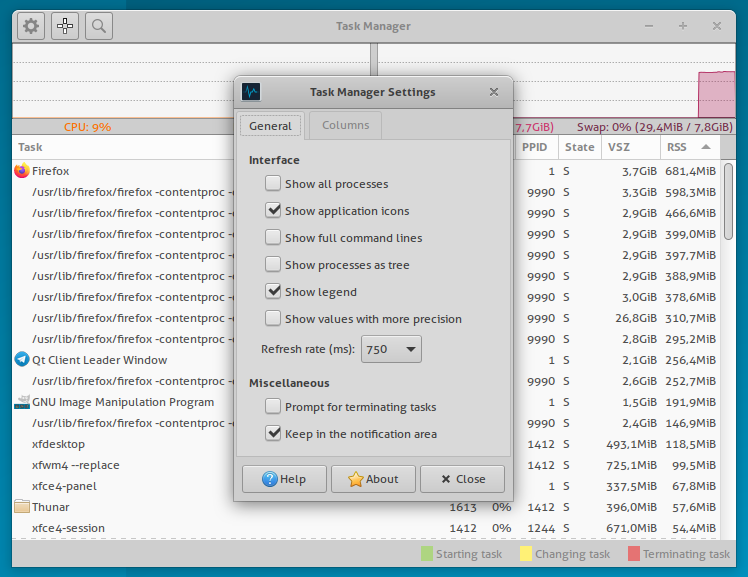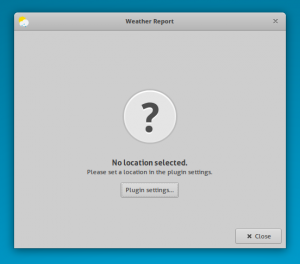After we successfully released Xfce 4.16 as an early Christmas gift to all users last year I personally fell into the typical “post release fatigue” (PRF). On the one hand I was exhausted, on the other hand that’s how far our plans had taken us so there were no clear next steps we had settled on (apart from taking a break and recharging :)).
So what’s been going on since then…
Xfce 4.16 maintenance
First of all, we’ve done quite a few maintenance release of 4.16 to ensure it’s stability. We already provided lots of bugfix releases of 4.14 – some even very recently (Desktop, Appfinder) – but it looks like 4.16 may end up being (at least: among) the best maintained Xfce release so far.
Thunar is probably the active component with a 6th patch release being available already. Here goes an overview of all patch releases since 4.16.0 in December 2020:
- Thunar: 4.16.1, 4.16.2, 4.16.3, 4.16.4, 4.16.5, 4.16.6
- Panel: 4.16.1, 4.16.2
- Xfwm4: 4.16.1
- Garcon: 4.16.1
- Appfinder: 4.16.1
Developer documentation
In order to improve documentation for developers and make it more readily available we have started developer.xfce.org. For now this site hosts the API documentation of most relevant core components. This documentation is automatically kept up-to-date as part of our GitLab CI for the xfce/xfce-build Docker container and re-deployed on every week based on the latest 4.16 release tags.
Furthermore, we improved the shell-based helper scripts for developers, e.g. xfce-build (to locally run distcheck in the same Docker container used in our CI) with subcommands.
Task manager
I have fixed some bugs and done maintenance releases of the 1.4 series and started the 1.5 development series, which features a port of Task manager to Xfconf and Client-side decorations.

New icon naming scheme
As we changed the icon names for all Xfce components during the 4.16 cycle, I also migrated some plugins to the new naming scheme.
To briefly explain the rationale behind our change in 4.16: the previous names were highly inconsistent, overlapped with icons also used/shipped by other packages in distributions (so shipping our own icons with those “old” / “used” names would lead to unsolvable packaging conflicts). Especially the “standard” names like “preferences-desktop-*” would have been impossible to update and ship for us. In order to provide a consistent look and also to make it easier for icon theme maintainers to set up icons for Xfce we decided to follow the rDNS naming scheme for desktop files. The same naming scheme is already followed by Gnome, so it is fairly widespread in Gtk-based environments. Finally: previously no icon theme maintainer could even provide dedicated icons because the names overlapped and would also appear in other contexts or Desktop Environments.
Being an icon theme maintainer myself, I understood that this would lead to work for others. Sean even created a script to make it easier for everyone to update existing themes.
Plugin updates

I have taken a look at the three more prominent “monitoring plugins” of Xfce, namely CPU-graph, Systemload and Netload. I have created new icons for all three of them in a style consistent to the icons introduced in Xfce 4.16 and also ported Systemload to Xfconf.


I have also updated the Weather plugin quite a bit, adding a new icon, porting to Xfconf and improving the UX of the settings and forecast summary windows.
Finally some of the plugins mentioned above now implement the xfce_dialog_show_help API, which creates a “Help” button linking to the plugin’s documentation. This has been made possible by Kev, who ported the plugin documentation pages to docs.xfce.org and harmonized them, where possible. He also helped with adding more of these “Help” buttons and we’ll probably continue updating our plugins in parallel to the 4.18 cycle to make it easier for users to find the corresponding online documentation.
What’s next
The next step for me will likely be to focus on kickstarting the 4.18 cycle, which is still in its planning phase.
Thanks a lot for the hard work you guys !! We’re thrilled to still have such dedication and effort on the XFCE project.
Personally I think it’s a best Desktop Environment for developers and all IT people alike.
PS: I hope there’s be more effort on performance optimization on the next release cycle. Don’t wanna look bad in front of the KDE gang ya know 🙂